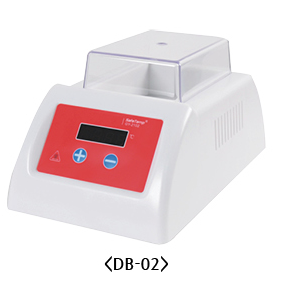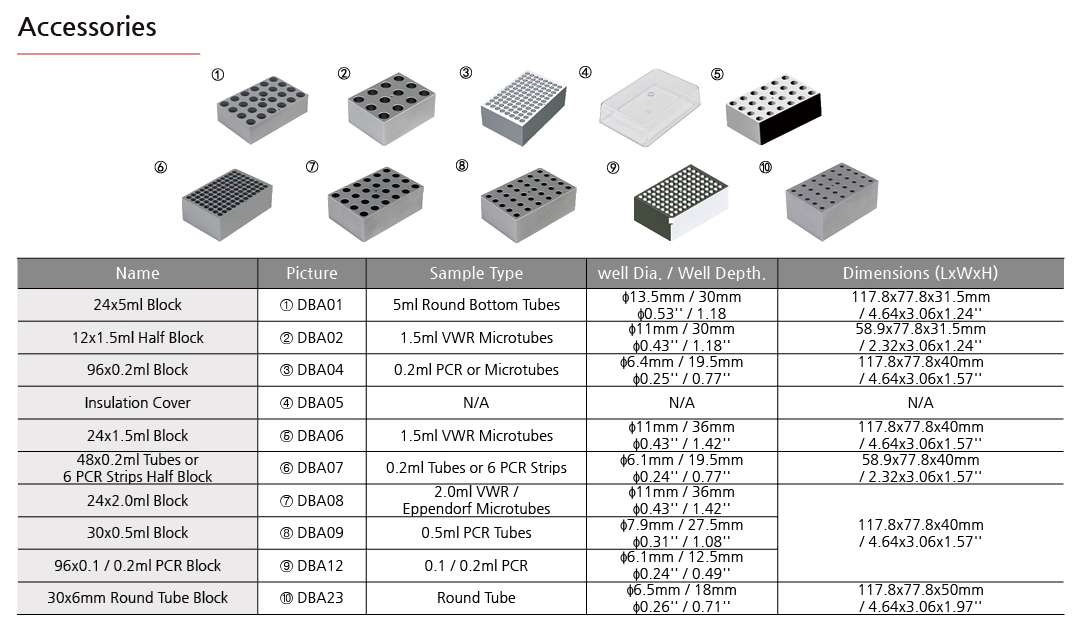Multi-Purpose Water Bath
A multi-purpose water bath is a laboratory instrument used for a variety of applications that require precise temperature control and the immersion of samples or equipment in a temperature-regulated water bath. It is commonly used in research, medical, and industrial laboratories.
A multi-purpose water bath typically consists of the following components:
Water Bath Chamber: It is a stainless steel or other corrosion-resistant chamber that holds the water and provides insulation. The chamber is designed to withstand high temperatures and is often insulated to minimize heat loss.
Temperature Control: The water bath is equipped with a temperature control system that allows precise regulation and maintenance of the desired temperature. This can include a digital controller with a display and buttons for setting the temperature.
Heating Element: The heating element is responsible for raising the temperature of the water bath. It is controlled by the temperature control system to achieve and maintain the desired temperature.
Circulation System (Optional): Some multi-purpose water baths may include a built-in circulation system to ensure uniform temperature distribution throughout the bath. This can involve a water pump or an integrated stirring mechanism to promote better heat transfer.
Safety Features: Water baths often incorporate safety features such as over-temperature protection, low-water level detection, and alarms to prevent overheating or accidents.
Bath Cover: A transparent or removable cover is commonly provided to prevent heat loss and evaporation from the water bath. It also helps maintain a stable temperature environment.
The multi-purpose nature of these water baths means they can accommodate a wide range of applications, such as sample thawing, warming, incubation, enzyme reactions, bacterial cultures, and temperature-sensitive material testing. The temperature range can vary depending on the specific model but typically covers ambient temperatures up to around 99°C (210°F).

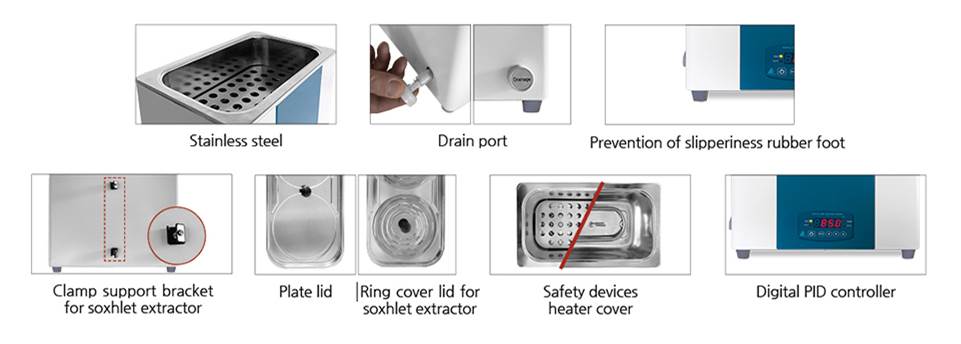
General-Purpose Oil Bath
A general-purpose oil bath is a laboratory instrument used for heating and maintaining a stable temperature for samples or equipment immersed in an oil medium. It is commonly employed in scientific research, chemical synthesis, and other applications where precise temperature control and stability are crucial.
Here are the key components and features of a general-purpose oil bath:
Oil Bath Vessel: The oil bath vessel is typically made of stainless steel or other corrosion-resistant materials to withstand high temperatures and resist chemical reactions with the oil. It holds the oil medium and provides insulation.
Heating Element: The heating element, often an electric coil or heating mantle, is responsible for raising the temperature of the oil bath. It is controlled by a temperature control system to achieve and maintain the desired temperature.
Temperature Control: A temperature control system is integrated into the oil bath, allowing precise regulation and adjustment of the temperature. This can include a digital controller with a display and buttons for setting the temperature.
Oil Medium: The oil medium used in the bath serves as a heat transfer medium and provides a stable and uniform temperature environment. Silicone oil or mineral oil are commonly used due to their high boiling points and good thermal conductivity.
Safety Features: Oil baths often incorporate safety features such as over-temperature protection, low-oil level detection, and alarms to prevent overheating or accidents. It's important to handle the oil bath with caution to avoid burns or spills.
Bath Cover: A cover or lid may be provided to minimize heat loss and maintain temperature stability. It also helps prevent contamination and evaporation of the oil.
General-purpose oil baths offer a wide temperature range, typically from ambient temperatures up to around 250°C (482°F) or higher, depending on the specific model. They are suitable for various applications such as sample preparation, heating reactions, temperature calibration, and viscosity measurements.

Circulating Water Bath
A circulating water bath is a laboratory instrument used for precise temperature control of samples or equipment by circulating temperature-controlled water through the bath. It is commonly used in scientific research, medical laboratories, and industrial applications where accurate temperature control is essential.
Here are the key components and features of a circulating water bath:
Water Bath Chamber: The water bath chamber is typically made of stainless steel or other corrosion-resistant materials. It holds the water and provides insulation to minimize heat loss.
Temperature Control: The circulating water bath is equipped with a temperature control system that allows precise regulation and maintenance of the desired temperature. This can include a digital controller with a display and buttons for setting the temperature.
Heating and Cooling Systems: The water bath is equipped with both a heating system and a cooling system. The heating system, often an electric coil or heating element, raises the temperature of the water bath. The cooling system, such as a refrigeration unit or a Peltier device, cools the water bath when necessary to achieve the desired temperature.
Circulation Pump: A circulation pump is used to circulate the temperature-controlled water throughout the bath. This ensures uniform temperature distribution and faster heat transfer, resulting in precise temperature control.
Safety Features: Circulating water baths may incorporate safety features such as over-temperature protection, low-water level detection, and alarms to prevent overheating or accidents.
Bath Cover: A cover or lid is often provided to minimize heat loss and maintain temperature stability. It also helps prevent evaporation and contamination of the water bath.
Circulating water baths offer a wide temperature range, typically from ambient temperatures up to around 100°C (212°F) or higher, depending on the specific model. They are suitable for various applications such as sample incubation, enzymatic reactions, cell culture, and temperature-sensitive material testing.
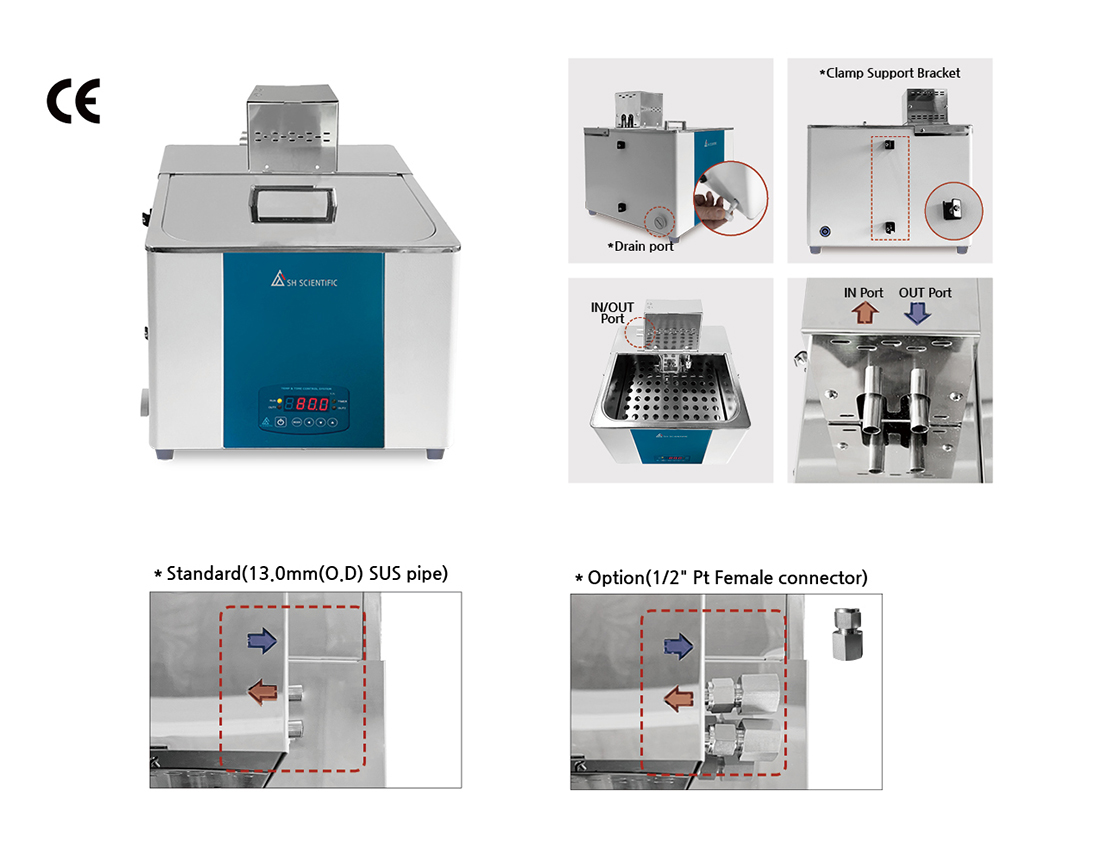
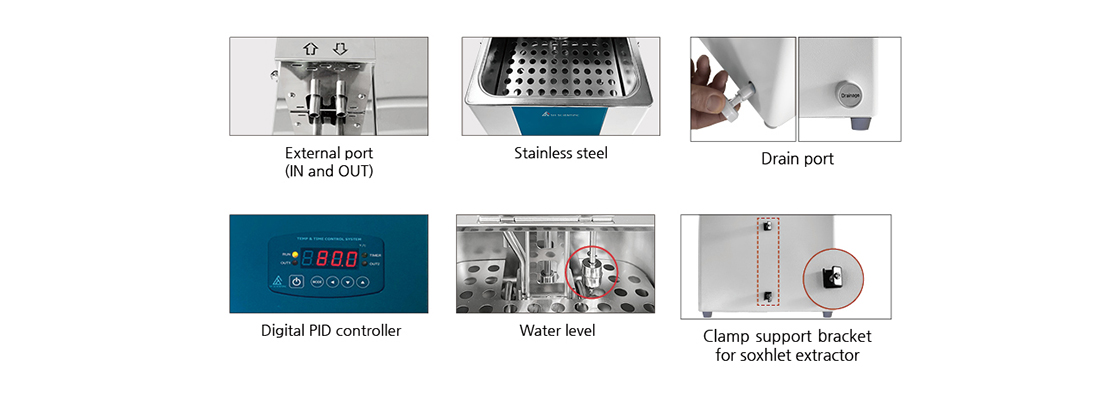
Refrigerated Circulating Bath
A refrigerated circulating bath, also known as a refrigerated circulator or chiller, is a laboratory instrument used for precise temperature control of samples or equipment by circulating temperature-controlled fluid at lower temperatures. It is commonly used in scientific research, medical laboratories, and industrial applications where cooling and temperature control are crucial.
Here are the key components and features of a refrigerated circulating bath:
Bath Chamber: The bath chamber is typically made of stainless steel or other corrosion-resistant materials. It holds the temperature-controlled fluid (often a heat transfer fluid like ethylene glycol or propylene glycol) and provides insulation to minimize heat transfer with the environment.
Temperature Control: The refrigerated circulating bath is equipped with a temperature control system that allows precise regulation and maintenance of the desired temperature. This can include a digital controller with a display and buttons for setting the temperature.
Cooling System: The refrigerated circulating bath incorporates a cooling system, typically a refrigeration unit, to lower the temperature of the fluid in the bath chamber. The cooling system can achieve temperatures below ambient, allowing for precise cooling control.
Circulation Pump: A circulation pump is used to circulate the temperature-controlled fluid throughout the bath chamber and external applications. This ensures uniform temperature distribution and efficient heat transfer.
Safety Features: Refrigerated circulating baths may incorporate safety features such as over-temperature protection, low-fluid level detection, and alarms to prevent overheating or accidents.
Bath Cover: A cover or lid is often provided to minimize heat transfer with the environment and maintain temperature stability. It helps prevent evaporation and contamination of the fluid.
Refrigerated circulating baths offer a wide temperature range, typically from below ambient temperatures up to around -30°C (-22°F) or lower, depending on the specific model. They are suitable for applications such as sample cooling, reaction control, temperature-sensitive material storage, and low-temperature testing.

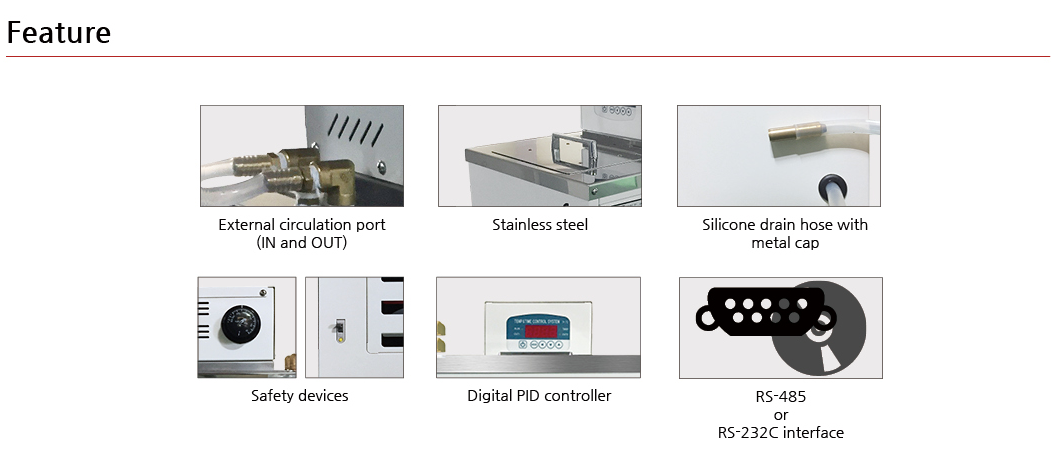
Recirculating Chiller
A recirculating chiller, also known as a circulating chiller or recirculating cooler, is a refrigeration system used to provide precise temperature control and cooling for various laboratory applications. It is commonly used in scientific research, analytical chemistry, biotechnology, and other fields where temperature-sensitive equipment or processes require cooling.
Here are the key components and features of a recirculating chiller:
Compressor and Refrigeration System: The recirculating chiller includes a compressor and a refrigeration system that work together to provide cooling. The compressor compresses and circulates the refrigerant, removing heat from the system.
Cooling Medium: The recirculating chiller uses a cooling medium, such as a refrigerant or a chilled liquid like water or ethylene glycol mixture, to absorb heat from the application and maintain the desired temperature. The cooling medium is circulated through the system to provide consistent cooling.
Temperature Control System: The chiller is equipped with a temperature control system that allows precise regulation and maintenance of the desired temperature. This can include a digital controller with a display and buttons for setting the temperature.
Circulation Pump: A circulation pump is used to circulate the cooling medium through the application or equipment that requires cooling. This ensures efficient heat transfer and uniform temperature distribution.
Safety Features: Recirculating chillers may incorporate safety features such as over-temperature protection, low-fluid level detection, and alarms to prevent overheating or accidents.
External Connections: The chiller has input and output connections that allow it to be connected to the equipment or application requiring cooling. This enables the circulation of the cooling medium and heat exchange.
Recirculating chillers offer a wide temperature range, typically from below ambient temperatures to around -20°C (-4°F) or lower, depending on the specific model. They are suitable for applications such as cooling rotary evaporators, spectrometers, microscopes, chromatography systems, and other temperature-sensitive equipment.
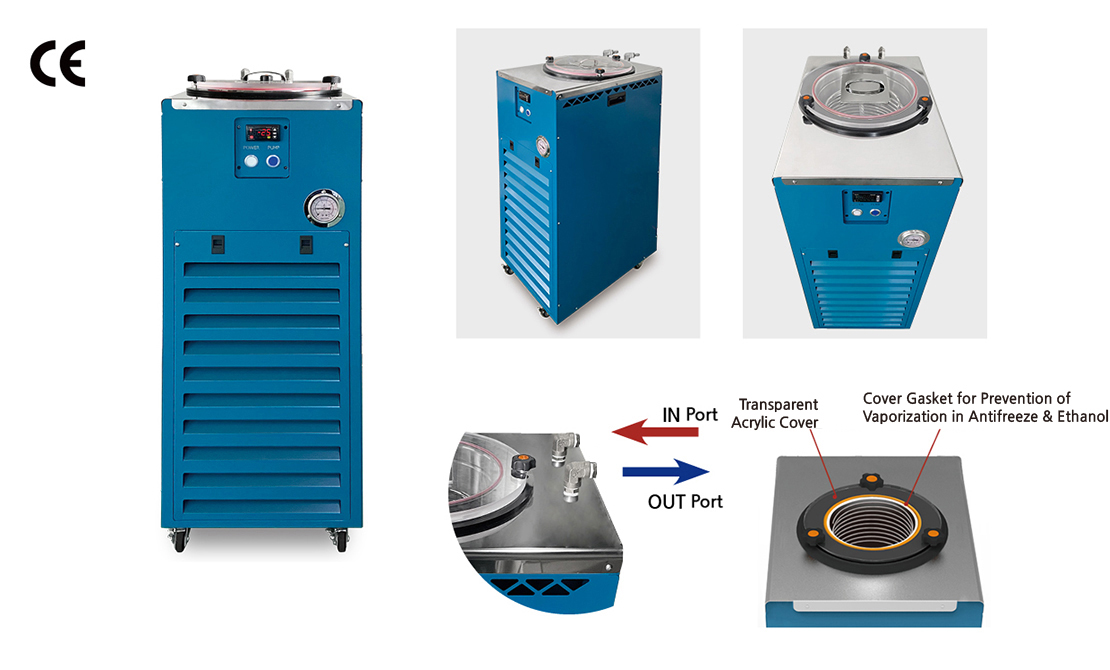


Ultrasonic Cleaner
An ultrasonic cleaner is a device that uses high-frequency sound waves to clean various objects and surfaces. It is commonly used in laboratories, jewelry stores, dental clinics, and other settings where thorough and efficient cleaning is required. Ultrasonic cleaners are particularly effective at removing dirt, contaminants, and residues from items.
Here are the key components and features of an ultrasonic cleaner:
Tank: The ultrasonic cleaner consists of a tank or basin where the cleaning process takes place. The tank is typically made of stainless steel and is filled with a cleaning solution or solvent.
Transducers: Transducers are located at the bottom or sides of the tank. They generate high-frequency sound waves, typically in the ultrasonic frequency range of 20 kHz to 40 kHz. These sound waves create cavitation bubbles in the cleaning solution, which implode upon contact with the surfaces being cleaned, thereby dislodging dirt and contaminants.
Control Panel: The ultrasonic cleaner is equipped with a control panel that allows users to set and adjust cleaning parameters such as time and intensity. It may include digital displays, buttons, and settings for optimal cleaning performance.
Heating Element (Optional): Some ultrasonic cleaners have a built-in heating element that allows the cleaning solution to be heated to enhance cleaning effectiveness. Heating the solution can also help dissolve stubborn residues or improve the speed of the cleaning process.
Basket or Tray: To facilitate the cleaning process, ultrasonic cleaners often come with a basket or tray where items to be cleaned can be placed. This helps to prevent direct contact between the items and the transducers, ensuring efficient cleaning and protecting delicate objects from damage.
Safety Features: Ultrasonic cleaners may include safety features such as automatic shut-off timers and overheat protection to prevent damage to the equipment and ensure safe operation.
Ultrasonic cleaners are used for a wide range of applications, including jewelry cleaning, dental instrument cleaning, laboratory glassware cleaning, electronics cleaning, and many more. They are highly efficient and can reach and clean intricate areas that are challenging to access using traditional cleaning methods.
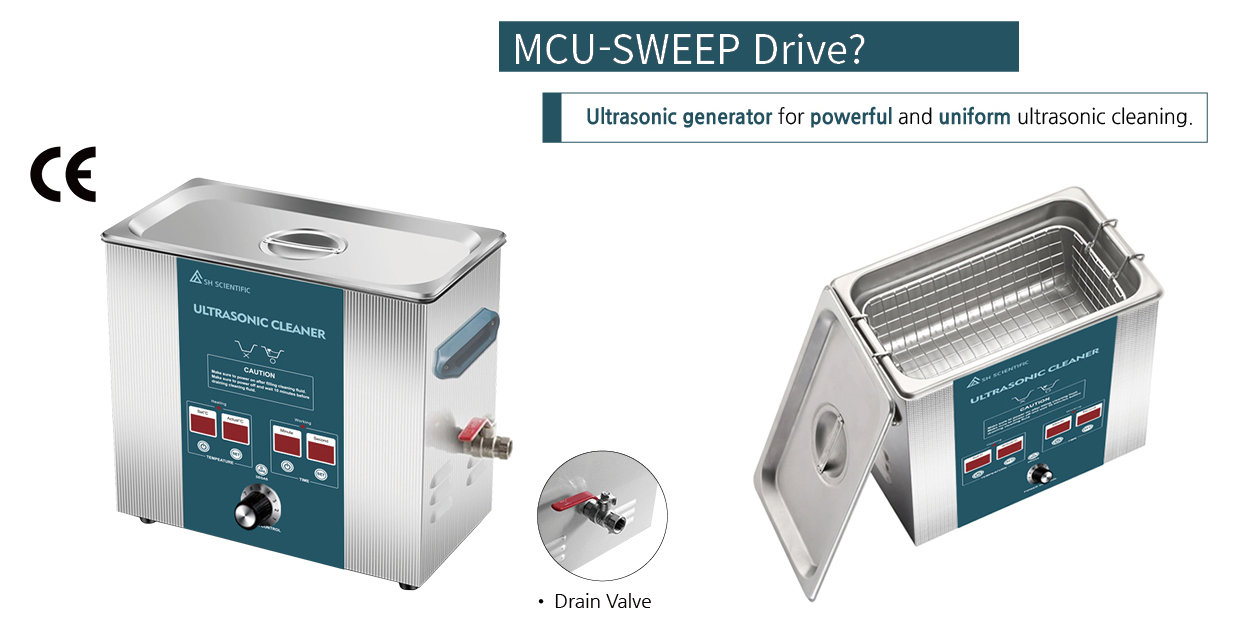
Mini Water Bath
A mini water bath is a compact and portable version of a standard water bath used in laboratory settings. It is designed for smaller scale applications and is particularly useful when space is limited or when a smaller volume of samples or equipment needs to be heated or maintained at a specific temperature.
Here are the key features and components of a mini water bath:
Water Bath Chamber: The water bath chamber of a mini water bath is typically made of stainless steel or other corrosion-resistant materials. It is smaller in size compared to standard water baths but still provides insulation and holds the water.
Temperature Control: A mini water bath is equipped with a temperature control system that allows users to set and regulate the desired temperature. This can include a digital controller with a display and buttons for easy temperature adjustment.
Heating Element: The heating element in a mini water bath is responsible for raising the temperature of the water. It is controlled by the temperature control system to achieve and maintain the desired temperature.
Safety Features: Mini water baths often include safety features such as over-temperature protection and low-water level detection to prevent overheating and ensure safe operation.
Bath Cover: A mini water bath may come with a cover or lid to reduce heat loss and maintain temperature stability. The cover also helps prevent evaporation and contamination of the water bath.
Portability: Mini water baths are designed to be compact and lightweight, making them easy to transport and suitable for use in various locations within a laboratory or even in the field.
Mini water baths are suitable for applications such as sample thawing, warming, incubation of small volumes, enzyme reactions, and other temperature-sensitive experiments that require precise temperature control on a smaller scale. They are commonly used in research, educational laboratories, and medical settings.

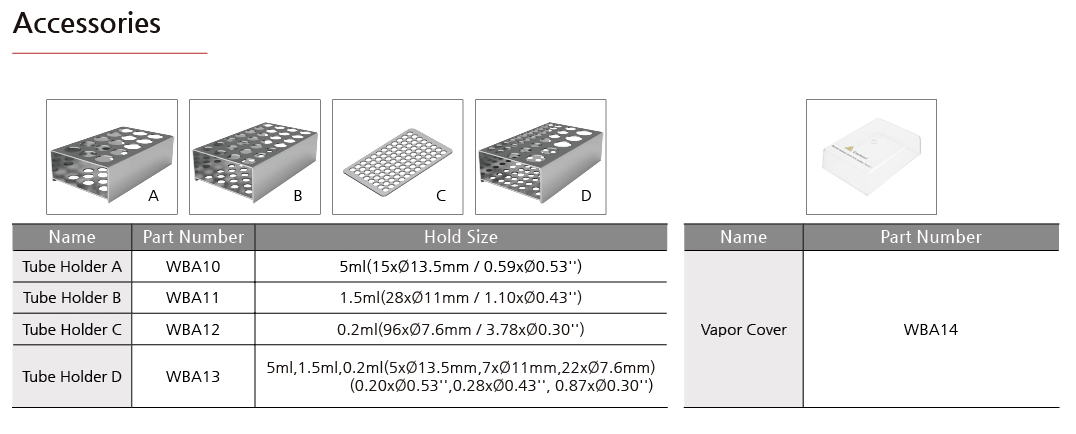
Digital Dry Bath
A digital dry bath, also known as a dry block heater or dry heat block, is a laboratory instrument used for precise and controlled heating of samples or test tubes. It is commonly used in molecular biology, microbiology, biochemistry, and other research fields where temperature control is critical for various applications.
Here are the key features and components of a digital dry bath:
Heating Block: The digital dry bath contains a block made of a thermally conductive material, such as aluminum, that provides uniform heating across the sample wells. The heating block typically has a series of wells or slots where the sample tubes or vessels are placed.
Temperature Control: A digital dry bath is equipped with a temperature control system that allows users to set and regulate the desired temperature. It usually features a digital display and buttons for easy temperature adjustment. Some models offer programmable temperature profiles for time-sensitive experiments.
Heating Element: The heating element within the dry bath transfers heat to the block, ensuring even and efficient heating of the samples. The temperature control system regulates the heating element to achieve and maintain the desired temperature.
Sample Blocks and Adapters: To accommodate different types and sizes of sample tubes or vessels, digital dry baths often come with interchangeable blocks or adapters. These blocks or adapters fit into the heating block and have wells or slots specifically designed for specific tube sizes, such as 0.2 mL, 0.5 mL, 1.5 mL, or 2 mL tubes.
Safety Features: Digital dry baths may incorporate safety features such as over-temperature protection and automatic shut-off to prevent overheating and ensure safe operation.
Lid or Cover: Some digital dry baths come with a lid or cover that can be placed over the heating block to reduce heat loss and maintain temperature stability. The lid also helps prevent contamination and condensation during incubation or heating.
Digital dry baths offer precise temperature control and are commonly used for applications such as DNA amplification (PCR), enzyme reactions, sample thawing, incubation, and general sample heating. They are convenient alternatives to water baths when the use of liquid-filled systems is not preferred or practical.
